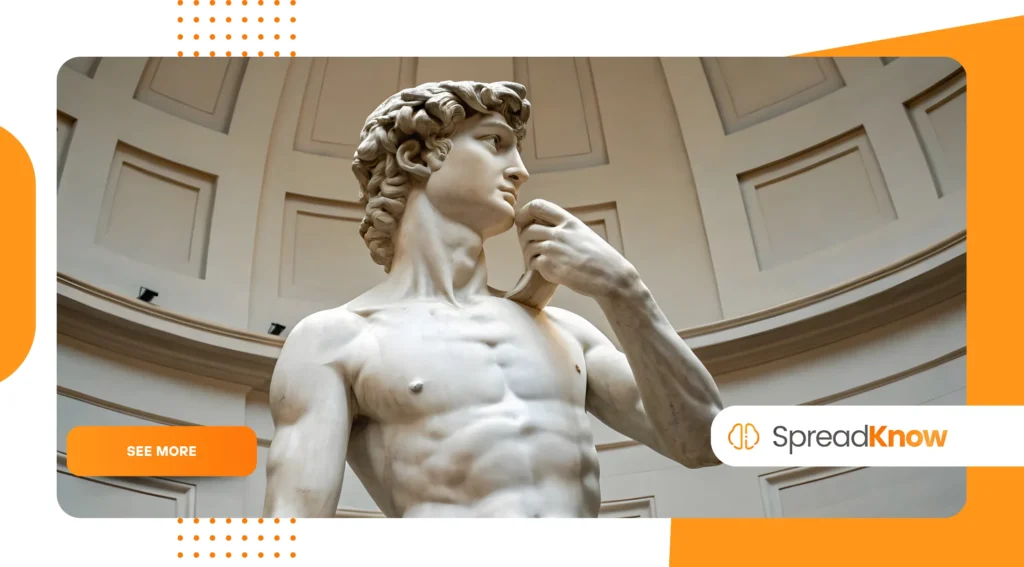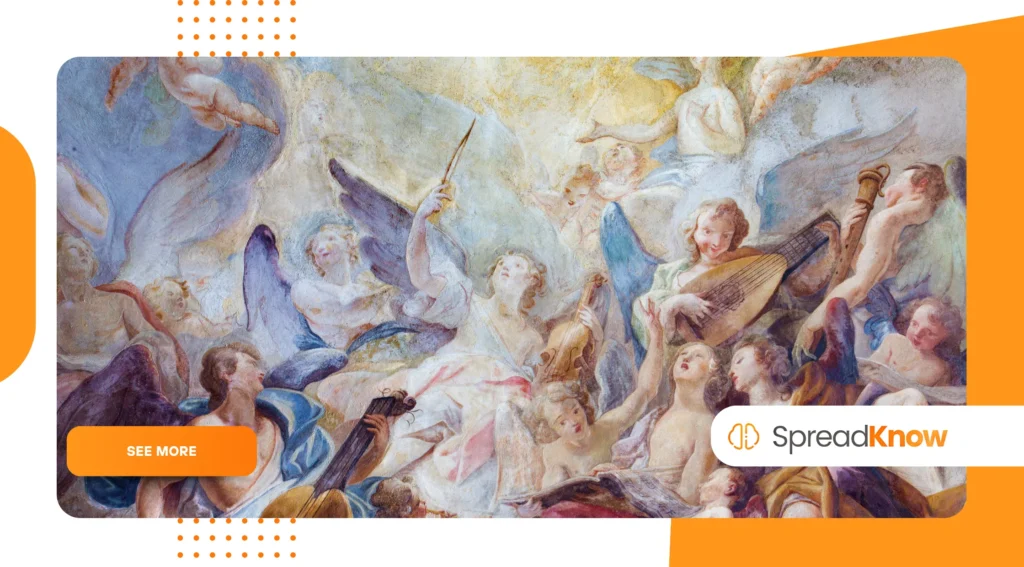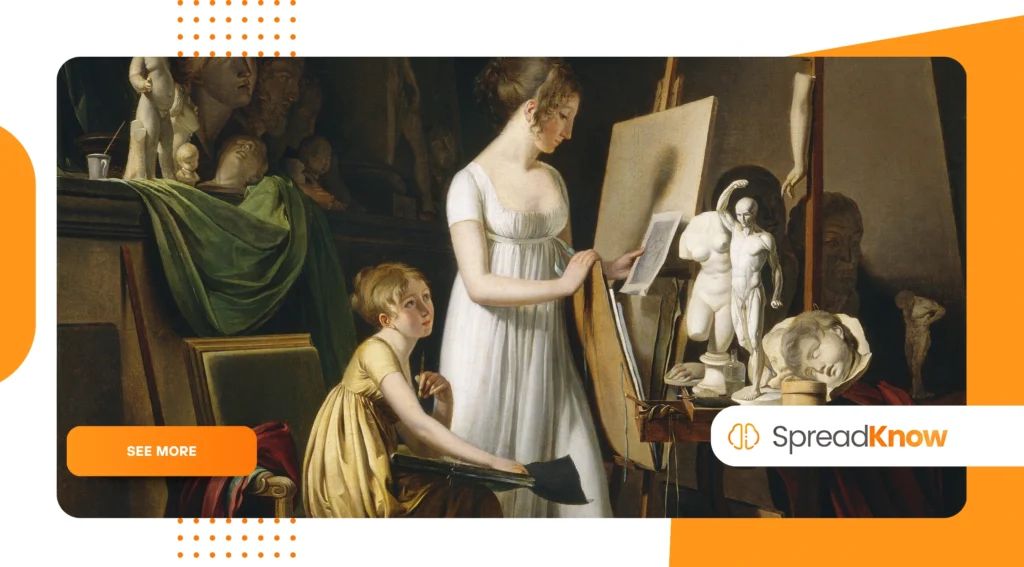10 mouvements artistiques célèbres et comment ils ont changé l'histoire

L’art a toujours été un miroir de l’expérience humaine et de l’exploration mouvements artistiques célèbres nous permet de comprendre comment la culture, la politique et la société ont évolué au fil des siècles.
Annonces
De la Renaissance au street art contemporain, chaque vague de créativité a remodelé non seulement l’esthétique mais aussi l’histoire elle-même.
Dans cet article, vous trouverez un parcours clair à travers dix mouvements transformateurs, pourquoi ils étaient importants et comment leurs héritages restent vivants aujourd'hui.
Résumé de ce que vous apprendrez :
- Les 10 mouvements artistiques les plus influents de l'histoire
- Comment ils ont façonné la culture, la politique et la vie quotidienne
- Pourquoi leur influence s'étend au-delà des galeries et des musées
Alors, explorons comment chaque mouvement a gravé sa place dans l’histoire et pourquoi ils suscitent encore débats et fascination.
Annonces
1. Renaissance : Renaissance de l'humanisme

Apparue au XIVe siècle en Italie, la Renaissance a révolutionné l'art en mettant l'accent sur la perspective, l'anatomie et les connaissances classiques.
Des artistes tels que Léonard de Vinci et Michel-Ange ont fait de la peinture et de la sculpture des plateformes pour célébrer le potentiel humain.
L’utilisation de la perspective linéaire donne aux œuvres comme « La Cène » une impression de vie, entraînant les spectateurs dans le récit.
En combinant science et art, les personnages ont acquis une profondeur réaliste, marquant une rupture avec la représentation médiévale plate. Cette fusion a suscité la curiosité intellectuelle dans toute l'Europe.
Dans le même temps, les mécènes de la Renaissance, comme la famille Médicis, ont fait en sorte que l’innovation artistique devienne un symbole de fierté civique et de pouvoir politique.
Florence, Venise et Rome ont prospéré en tant que centres culturels, établissant des normes qui continuent d’influencer la formation académique dans les écoles d’art aujourd’hui.
+ Les origines des genres musicaux populaires
2. Baroque : pouvoir et émotion

Au XVIIe siècle, le mouvement baroque dominait l'Europe. Avec sa lumière dramatique, ses compositions dynamiques et sa grandeur, l'art baroque cherchait à impressionner ses spectateurs.
Des artistes comme Caravage et Rembrandt ont insufflé une émotion brute à leurs œuvres, souvent avec le mécénat religieux ou royal guidant leur vision.
La théâtralité a défini cette période : pensez à « L’Extase de sainte Thérèse » du Bernin, où le marbre respire avec une intensité presque divine.
Il ne s’agissait pas d’une décoration mais d’une persuasion, conçue pour rendre la foi viscérale et irrésistible.
L’esthétique baroque s’est répandue au-delà de l’Europe, influençant les églises coloniales d’Amérique latine.
Même les cinéastes modernes empruntent des techniques de clair-obscur, prouvant que le langage dramatique baroque continue de façonner la narration visuelle des siècles plus tard.
+ À la découverte de l'art autochtone : un voyage au cœur des traditions anciennes
3. Néoclassicisme : retour à l'ordre

À la fin du XVIIIe siècle, le néoclassicisme réagit à l'extravagance baroque. Des artistes comme Jacques-Louis David reviennent aux idéaux classiques d'harmonie, de rationalité et de vertu civique.
Des tableaux comme « La Mort de Socrate » ont mis des histoires anciennes au service de la politique contemporaine, incitant les citoyens à se considérer comme les héritiers du républicanisme romain.
L’art est devenu un outil éducatif, alignant le sacrifice personnel sur les idéaux nationaux.
L'architecture reflétait ces principes, les bâtiments publics adoptant des colonnes et une symétrie gréco-romaines.
Se promener aujourd’hui à Washington, DC, c’est comme entrer dans un manifeste néoclassique, où l’esthétique signale l’ordre, la discipline et l’aspiration démocratique.
+ Qu'est-ce que le Slow Art et pourquoi est-il tendance sur les réseaux sociaux ?
4. Romantisme : l'émotion avant la raison
Le romantisme s'est rebellé contre l'ordre rationnel, célébrant l'émotion, l'imagination et la nature. Des peintres comme Francisco Goya et JMW
Turner a produit des œuvres obsédantes et sublimes qui ont confronté les spectateurs à la vulnérabilité humaine.
Les toiles orageuses de Turner capturaient la force brute de la nature, rappelant aux gens leur petitesse face à des éléments incontrôlables.
Les représentations brutales de la guerre par Goya ont humanisé la souffrance d'une manière que les statistiques n'auraient jamais pu faire.
Le romantisme a influencé la littérature et la musique tout aussi fortement, les poètes et les compositeurs faisant écho à sa profondeur émotionnelle.
L’insistance du mouvement sur le sentiment personnel plutôt que sur des systèmes rigides fait écho aux conversations modernes sur l’authenticité et la liberté créative.
5. L'impressionnisme : rompre avec la tradition
Peu de mouvements ont suscité autant de controverses que l'impressionnisme. Dans la France du XIXe siècle, Claude Monet, Edgar Degas et Pierre-Auguste Renoir ont remis en question les normes rigides de la peinture académique.
Au lieu d’une perfection polie, ils ont capturé des moments fugaces avec des coups de pinceau visibles et des couleurs vibrantes.
« Impression, soleil levant » de Monet a donné son nom au mouvement, se moquant des critiques qui le considéraient comme inachevé.
Pourtant, ces scènes chatoyantes de jardins et de rues capturaient la vie telle que les gens la vivaient réellement : transitoire, imparfaite, vivante.
Considérez-la comme la photographie spontanée d'aujourd'hui, comparée aux portraits mis en scène. Les impressionnistes valorisaient la spontanéité et, ce faisant, s'inscrivaient dans une société en pleine modernisation, qui privilégiait la rapidité et l'immédiateté plutôt que la formalité.
6. Postimpressionnisme : Visions personnelles
Là où l'impressionnisme s'est arrêté, le postimpressionnisme a pris de nouveaux risques. Des artistes comme Vincent van Gogh, Paul Cézanne et Paul Gauguin ont abandonné le naturalisme au profit de l'expression personnelle.
Les couleurs intenses et le coup de pinceau tourbillonnant de Van Gogh reflétaient une turbulence intérieure plutôt qu'une précision extérieure. Cézanne a décomposé les paysages en formes géométriques, ouvrant la voie au cubisme.
Gauguin a cherché un renouveau spirituel dans ses œuvres tahitiennes, rejetant les conventions européennes.
Ce changement illustre comment les artistes ont commencé à valoriser l’expression personnelle plutôt que le style collectif.
Le postimpressionnisme a jeté un pont entre le réalisme et l’abstraction, enseignant aux générations futures que le rôle de l’art n’était pas seulement de représenter le monde, mais de l’interpréter.
7. Cubisme : fragmenter la réalité
Développé par Pablo Picasso et Georges Braque au début du XXe siècle, le cubisme décompose les objets en formes géométriques, démantelant l'illusion de profondeur.
C’était radical, déroutant et profondément moderne.
« Les Demoiselles d'Avignon » de Picasso a choqué le public en fusionnant plusieurs perspectives sur une seule toile. Au lieu de montrer la réalité telle qu'elle apparaît, le cubisme posait la question : et si la vérité était multidimensionnelle ?
Cette approche faisait écho à des changements plus vastes dans la science et la philosophie. Tout comme la théorie de la relativité d'Einstein a redéfini la physique, le cubisme a incité les spectateurs à voir au-delà d'un seul point de vue fixe.
L’analogie entre l’art et la science montre ici comment la culture évolue dans des domaines parallèles.
8. Surréalisme : le pouvoir des rêves
Dans les années 1920, le surréalisme émerge avec Salvador Dalí, René Magritte et Max Ernst qui explorent le subconscient.
Inspiré par les théories de Freud, le surréalisme cherchait à libérer l’imagination du contrôle rationnel.
Les horloges fondantes de Dalí ou les hommes flottants de Magritte n'étaient pas de simples fantasmes. Ils confrontaient les spectateurs à des questions sur la réalité et la perception, nous rappelant que l'inconscient influence une grande partie du comportement humain.
La portée du surréalisme s'est étendue bien au-delà des galeries, influençant la publicité, la mode et le cinéma.
Son vocabulaire onirique a façonné les icônes culturelles des films d’Hitchcock à l’art numérique moderne, montrant que l’imagerie subconsciente ne perd jamais sa pertinence.
9. Expressionnisme abstrait : la liberté sur toile
Après la Seconde Guerre mondiale, New York est devenue l’épicentre de l’art grâce à l’expressionnisme abstrait.
Les peintures au goutte-à-goutte de Jackson Pollock et les champs de couleur de Mark Rothko représentaient une liberté radicale, rejetant la forme traditionnelle.
Ce mouvement incarnait à la fois l'optimisme et l'anxiété de l'après-guerre. Les gestes énergiques de Pollock suggéraient la libération, tandis que les vastes étendues de couleurs de Rothko invitaient à la contemplation, voire à la réflexion spirituelle.
Selon le Metropolitan Museum of Art, l'expressionnisme abstrait a contribué à faire de New York la capitale mondiale de l'art, dépassant Paris (source : Musée Met).
Ce transfert culturel a remodelé de manière permanente le paysage artistique du XXe siècle.
10. Street Art : Voix du monde urbain
Apparu à la fin du XXe siècle, le Street Art est devenu l’un des mouvements contemporains les plus pertinents.
Des artistes comme Jean-Michel Basquiat et Banksy ont apporté un commentaire social brut sur les murs publics, contournant les galeries et les institutions.
Contrairement aux mouvements précédents confinés aux espaces d’élite, le Street Art a transformé des quartiers entiers en musées à ciel ouvert.
Les peintures murales répondent souvent à des problèmes actuels – changement climatique, inégalités ou politique identitaire – les rendant immédiates et accessibles.
Le fait que les musées du monde entier acquièrent désormais des graffitis et des peintures murales démontre leur légitimité.
Pourtant, son essence reste liée à l’engagement public, rappelant à la société que l’art n’est pas seulement destiné aux collectionneurs mais aux communautés.
+ L'évolution du street art : du vandalisme au grand art
Tableau : Aperçu de 10 mouvements artistiques célèbres
| Mouvement artistique | Période clé | Artistes représentatifs | Impact sur l'histoire |
|---|---|---|---|
| Renaissance | XIVe–XVIe s. | Léonard de Vinci, Michel-Ange | Renaissance de l'humanisme, mélange d'art et de science |
| Baroque | XVIIe siècle | Le Caravage, Rembrandt | Utilisé pour l'autorité religieuse et royale |
| Néoclassicisme | XVIIIe–XIXe s. | Jacques-Louis David | Langage visuel des révolutions et de la vertu civique |
| Romantisme | XIXe s. | Francisco Goya, Turner | L'accent sur l'émotion et la résistance politique |
| Impressionnisme | XIXe s. | Monet, Renoir | Redéfinir la perception et briser les traditions académiques |
| postimpressionnisme | Fin du XIXe siècle | Van Gogh, Cézanne | La voie ouverte vers l'abstraction et le modernisme |
| Cubisme | Début du XXe siècle | Picasso, Braque | Réalité fragmentée ; alignée sur la science moderne |
| Surréalisme | années 1920-1940 | Dalí, Magritte | Exploration du subconscient et du fantasme/réalité flou |
| Expressionnisme abstrait | années 1940-1950 | Pollock, Rothko | Positionner New York comme capitale mondiale de l'art |
| Art de rue | Fin du XXe siècle – aujourd'hui | Basquiat, Banksy | A donné voix aux récits urbains et politiques |
Pourquoi ces mouvements sont toujours importants
Les mouvements artistiques ne sont pas des tendances isolées ; ce sont des réponses culturelles à des moments spécifiques de l’histoire.
Quand tu regardes mouvements artistiques célèbres, vous voyez comment l’humanité a lutté contre le changement, parfois avec révérence, parfois avec rébellion.
Prenons l’exemple de l’impressionnisme : autrefois considéré comme négligent, il a ensuite façonné des médias visuels aussi divers que la photographie, le cinéma et même l’esthétique d’Instagram.
Ou pensez au Street Art, autrefois criminalisé, qui aujourd’hui stimule le tourisme urbain et façonne les débats politiques.
Comme des couches de peinture sur une toile, l'histoire n'efface pas les anciens traits, elle les renforce. Cette analogie explique pourquoi revisiter ces mouvements enrichit notre compréhension de la créativité moderne.
Questions fréquemment posées
1. Pourquoi les mouvements artistiques sont-ils importants pour l’histoire ?
Ils révèlent comment les sociétés ont réagi aux changements culturels, politiques et technologiques, offrant un témoignage visuel de l’expérience humaine.
2. Quel mouvement artistique a le plus influencé le design moderne ?
Le cubisme et le Bauhaus (bien que non détaillés ici) ont profondément façonné le design moderne, influençant l'architecture, la typographie et la communication visuelle.
3. Le Street Art fait-il vraiment partie de l’histoire de l’art ?
Oui. Le Street Art est étudié au niveau universitaire, collectionné par les musées et reconnu comme une force culturelle vitale au XXIe siècle.
Conclusion
Explorer mouvements artistiques célèbres Il ne s’agit pas seulement de revisiter de vieilles toiles ; il s’agit de comprendre le pouls de l’histoire.
De l’optimisme de la Renaissance aux déclarations audacieuses du Street Art, ces mouvements ont façonné la façon dont les sociétés se perçoivent et la manière dont la créativité alimente le changement.
Pour approfondir votre exploration, vous pouvez visiter des institutions de confiance comme Tate Modern, qui héberge de vastes ressources sur l'art historique et contemporain.
L’art reste l’un des moyens les plus puissants par lesquels les humains racontent leur histoire : une toile inachevée qui continue de grandir.
